Chinchilla hammock: how to choose and do it yourself?

Chinchilla hammock ... Funny thing, isn't it?
Apparently, if they try to make it and even give advice on how to make it, someone needs it. We'll figure out.
If there is a desire (or need) to have such a rodent as a chinchilla to please it, equip it with a small hammock. It will be both pleasant and useful for her, and will give comfort to her living area. And if the hammock is made with his own hand, the rodent will fully become a member of the family, as far as possible.
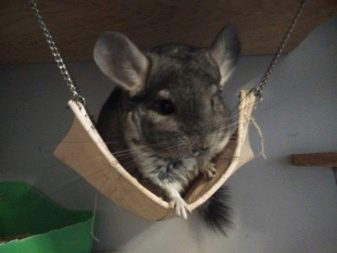

What is it needed for
Of course, at first glance, a chinchilla is a soft, fluffy, lazy and not very mobile creature (while sleeping). But as soon as she is given freedom, she will become extremely mobile, active, jumping and running across animals, even if she is inside the enclosure.
On the other hand, this rodent also loves to relax very, very much, therefore, it is necessary to make every effort to equip a comfortable and spacious home.
It should have enough space for both play and rest.
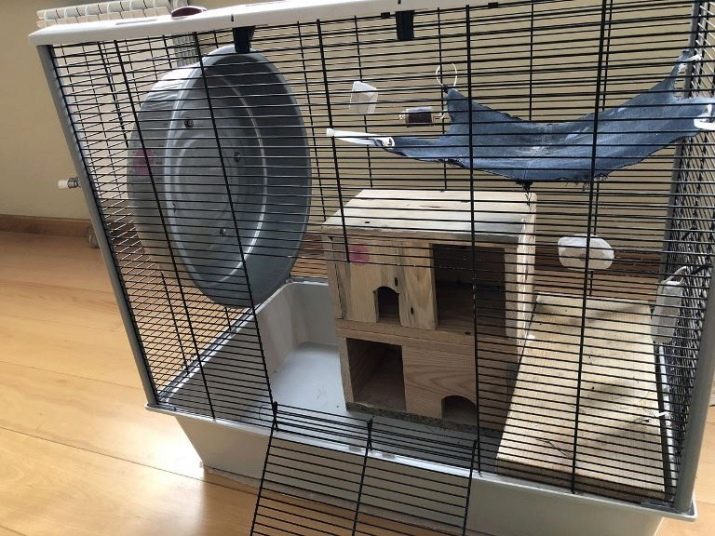
The chinchilla loves toys, and they should be different (a ball, a suspension and a spinning wheel), but the pet also loves to rest, therefore it is necessary to provide passive rest, for example, in a hammock. In such a shelter, the rodent can lie and bask for hours, and sometimes also swing, like on a swing.
Weird? Weird. But only at first glance.
Zoologists have discovered an unexpected fact - it turns out that many pets love the mini-hammock. The measured swing of the hammock provides a peaceful state in a dream, both for animals and for people.And chinchillas also seek protection in a suspended shelter, since it is more difficult for predators to reach it. You can drag a lot of insulating material into such a shelter and not be afraid that a relative will steal it, as if it were on the surface of the earth, besides, the shelter will not flood if it suddenly rains. All these reasons can prompt the owner to equip a hammock in a chinchilla cage.
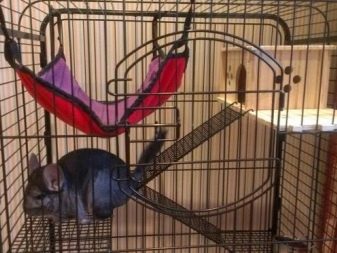
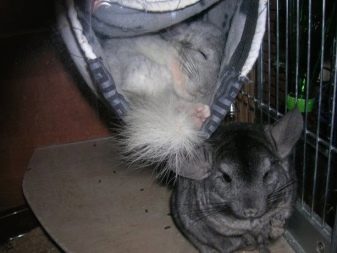
Product requirements
The question arises - do it yourself or buy it ready-made?
There is no big difference in the design of a human hammock and a chinchilla hammock. Both consist of elements that are securely attached to four points of support and are spaced some distance from ground level.
In the case when a hammock is made of fabric, it must:
- be dense enough and not succumb to rodent teeth;
- securely fixed to the roof / walls of the cage with carabiners or tied with such materials that a captive chinchilla cannot gnaw them;
- have an environmentally friendly, safe and durable base of the material - it should not tear or stretch when an animal jumps on it (fleece, denim, cotton fabrics).
Of course, the mounts should not have sharp edges so that the rodent is not injured.
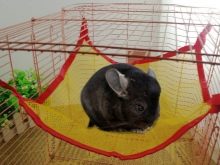

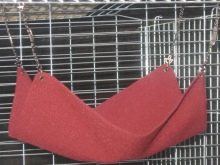
Manufacturing options
Hammocks can be one- and two-tiered. The chinchilla can either just rest in it, or hide between the tiers. Their height is determined by the height of the cage ceiling.
If we talk about making a hammock with your own hands, there are 3 main options:
- single-tiered;
- two-tier insulated;
- cylindrical (from the leg of jeans).
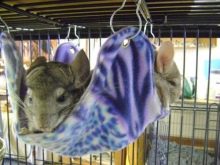

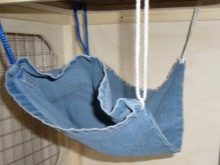
Single-tiered
For a hammock in one tier, it will be necessary to use a piece of the selected fabric (choose the optimal fleece material, since it is elastic, soft and easy to wash / clean) 1500/300 mm in size, threads, needles, scissors.
Sewing process:
- bend a piece of fabric, then bend the resulting one again;
- the surface is stitched with cells of 30 × 30 mm to exclude stretching or deformation;
- mark the edges in the places where the fasteners will be;
- pre-sweep the loops and cut symmetrically;
- when using a regular elastic band for fastening, sew it in a zigzag manner to the edge (prepare an elastic band in advance, a quarter of a meter from each edge);
- the edges must be reinforced in some way (stitched, protected with durable material so that the threads do not get into the pet's stomach).
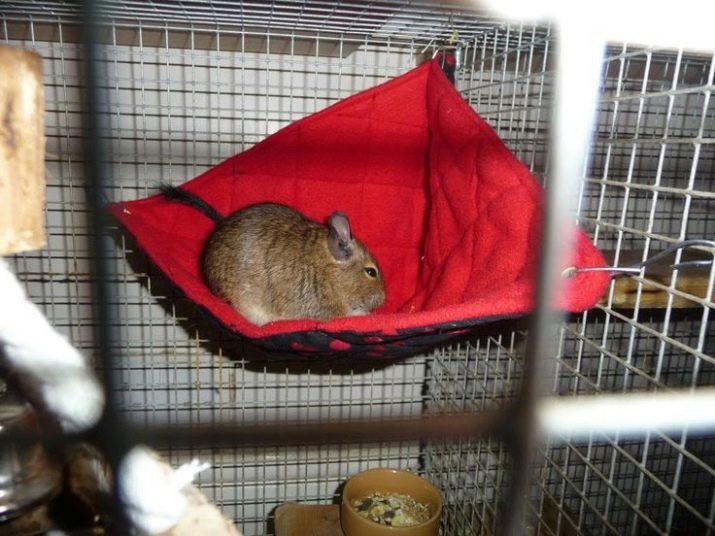
Bunk
To sew a two-tier insulated bed, you have to fork out for the purchase:
- again, a piece of fleece 1500/600 mm;
- for the "floor" you will need a thin synthetic winterizer 1500 × 300 mm;
- oblique inlay to process and strengthen the cuts;
- threads and needles, scissors.
The sewing process is not very different from the previous scheme, except that the hammock will be two-tier, for which the height of the upper tier should be reduced.
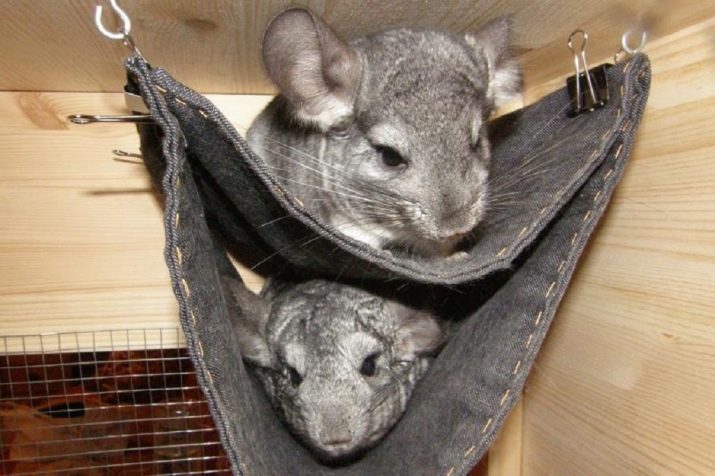
Cylindrical
Jeans that will be used to make a shelter for a chinchilla may have the same dimensions as in the first case: 1500/300 mm (regular leg)
The sewing process differs only in that the fabric is rather coarse, not very elastic and durable, it is more difficult to sew it. The question of how you can arrange a hammock outside refers only to the degree and capabilities of the owner of the chinchilla. Just remember to avoid the intense smells of evaporating chemicals.
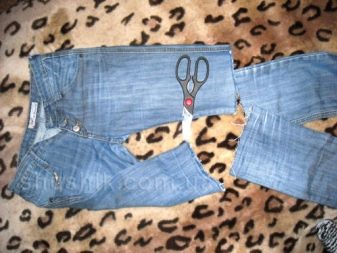
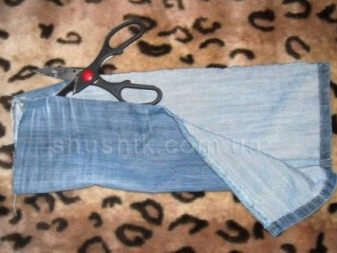
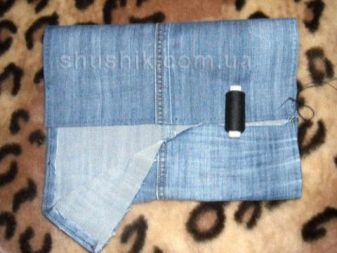
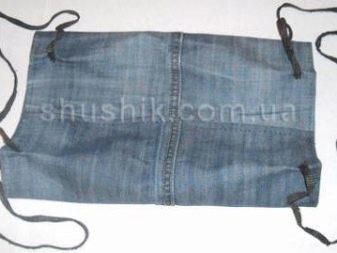
Helpful hints
Having built a hammock, do not relax. We'll have to go to the end and provide him with care, since the chinchilla herself cannot do this. And such a hammock will serve much longer.
- The hammock should not be washed less often than once every 50-60 days (the fluffiness of a chinchilla is well known, and accordingly, it sheds).
- In addition to wool, the material of the hammock is covered with a layer of food (the chinchilla does not learn to eat from the tray and often drags food into the hammock).
- Washing with odorous substances is undesirable (a chinchilla can ignore its favorite place because of a pungent smell), ordinary laundry soap will do.
- If the hammock is absent for some time, the chinchilla will be at a loss, so it is advisable to make a couple of hammocks for the washing / drying period. This will contribute not only to the fact that the chinchilla will rest, but also that the hammocks will not be very worn out and will serve for a longer time.

Each edge of the chinchilla hammock must be carefully processed:
- for the reason that she is a rodent (do not forget that it is vital for them to grind their teeth, without this they can simply die), respectively, they are active on the subject of "chewing - gnawing", and the beloved chinchilla will completely disassemble any fabric into strings, yes and devours it;
- She will surely, with her swift movements in the game, catch her claws on a separate thread.
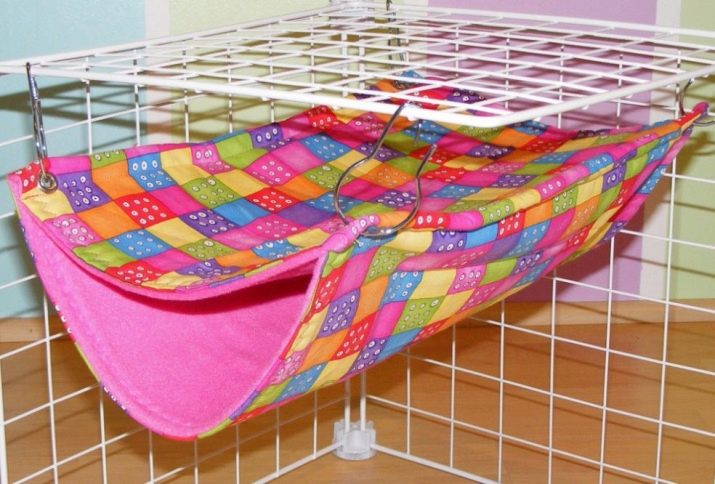
Another important point is that you should not choose slippery synthetic materials when making hammocks.
During friction, they will become electrified and beat the chinchilla (do not forget that the pet's coat is thin) with light, but quite sensitive electrical discharges. This will not be able to positively affect her temperament.
The thin fabric will not resist the pressure of the pet's claws (the chinchilla does not sit still for a second when it is awake) and will not last very long.
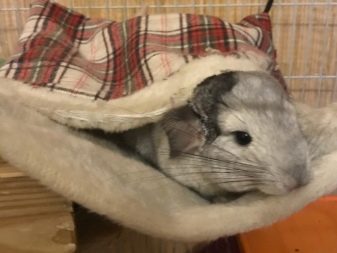
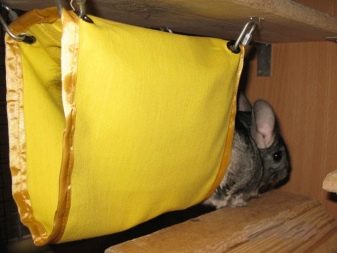
Owner reviews
Many owners of chinchillas testify that they often prefer to sleep in a hammock, and not in their burrow. Such experiments were also carried out in zoos, which confirmed the commitment of even predatory felines to stay in a hammock for many hours on vacation. In the hammocks, they photographed predators, herbivores, and primates. Apparently, the hammock gives them confidence in a certain safety, as, for example, a jerboa is afraid of a boa constrictor, and a chinchilla is afraid of its other enemies.
In general, a hammock for a favorite chinchilla (of course, if it is built with your own hands, and in full accordance with the recommendations of this article), will serve the owner for 4–5 years.
For information on how to sew a hammock for a chinchilla yourself, see the video below.








